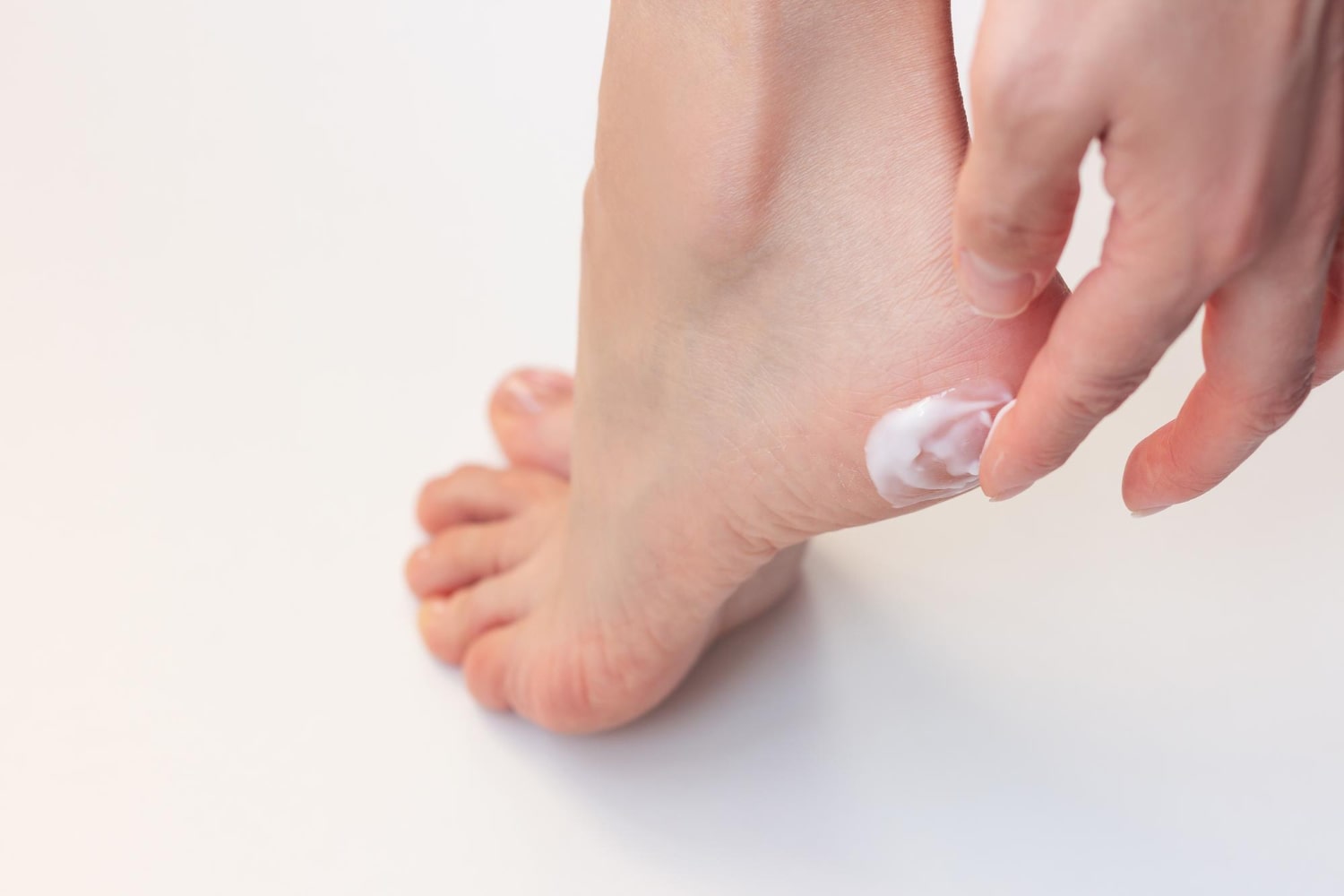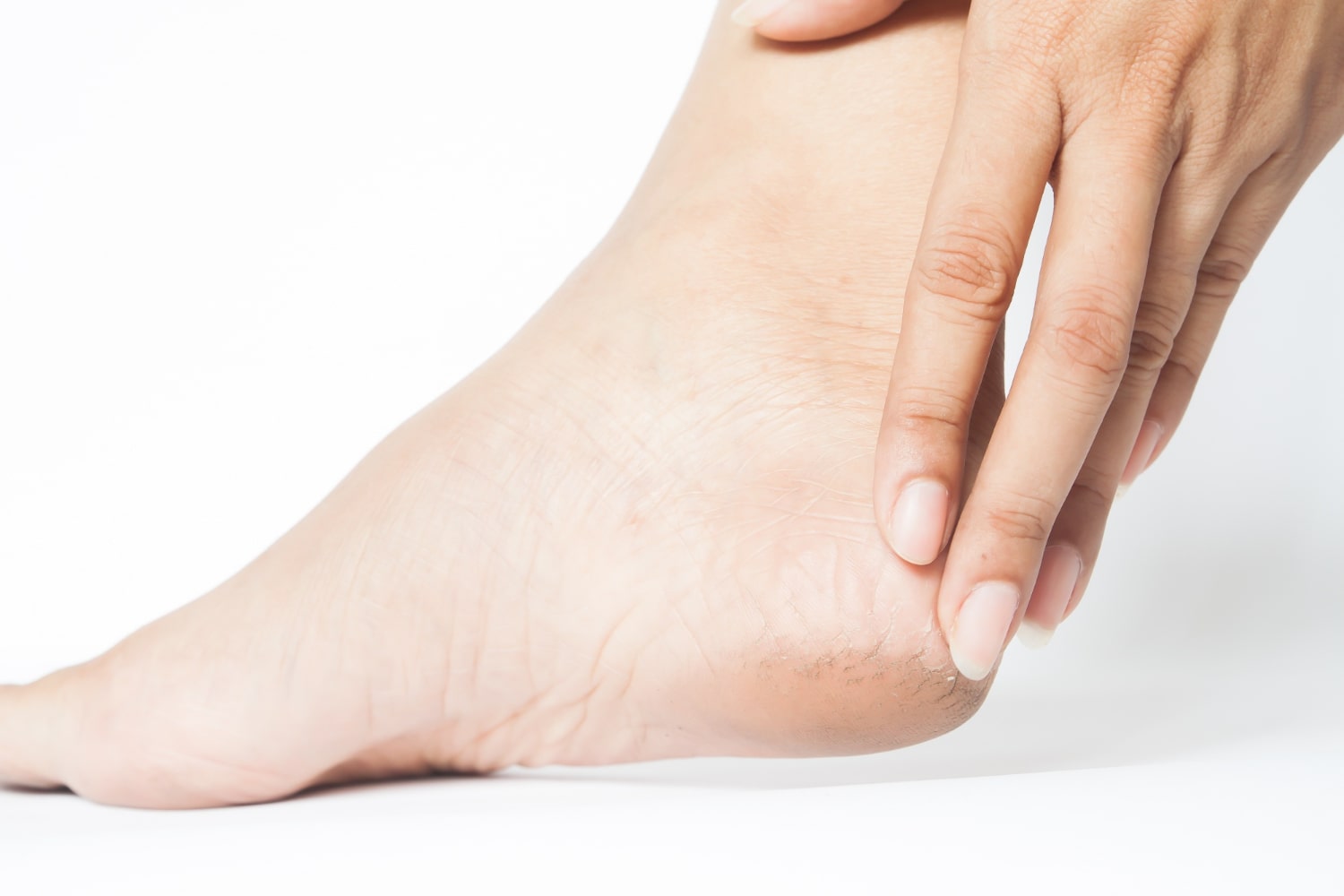Dry Skin on Diabetic Feet: Know the Risks
Dry skin, or xerosis, is a common dermatologic condition that affects individuals with diabetes, resulting from a combination of factors such as neuropathy, poor circulation, and altered sweat gland function. In diabetic patients, chronic hyperglycemia contributes to endothelial dysfunction, impairing blood flow to peripheral tissues and leading to compromised hydration in the skin, particularly in the lower extremities. This lack of adequate moisture can result in rough, cracked skin, which, if left untreated, may serve as an entry point for pathogenic microorganisms, increasing the risk of infections and more severe complications like diabetic foot ulcers. Addressing xerosis early is crucial in diabetes management, as uncontrolled skin conditions can escalate into more severe diabetic foot issues, potentially requiring invasive interventions.
What is Dry Skin (Xerosis) and How Does It Affect Diabetic Feet?
Xerosis, commonly referred to as dry skin, is characterized by a reduction in skin moisture levels, leading to tightness, flakiness, and cracking. In diabetic individuals, the development of xerosis is primarily driven by neuropathy and compromised vascular function. Peripheral neuropathy, a hallmark of diabetes, causes damage to the sensory nerves in the feet, diminishing the body’s ability to detect and respond to early signs of dehydration or skin damage. Additionally, diabetes-induced alterations in the blood vessels reduce the delivery of oxygen and nutrients to the skin, impeding its natural ability to maintain moisture. These physiological changes result in thickened, dry, and sometimes fissured skin, particularly around the heels and soles, where pressure and friction are most concentrated. If not properly managed, xerosis can lead to the formation of painful cracks that may introduce bacterial or fungal infections, significantly increasing the risk of more severe complications such as foot ulcers and even amputation.
Causes of Dry Skin on Diabetic Feet
The primary etiological factors contributing to dry skin (xerosis) in diabetic patients include peripheral neuropathy, reduced blood circulation, and alterations in the skin’s natural moisture-retaining mechanisms. Peripheral neuropathy, which affects up to 50% of individuals with diabetes, impairs the nervous system’s ability to detect changes in moisture levels and pressure, making the feet more vulnerable to dryness and injury. In addition, hyperglycemia leads to microvascular damage, reducing the blood supply to the feet and impeding the skin’s ability to repair and regenerate. The reduction in circulation also decreases sweat production, as the sweat glands require an adequate blood supply to function properly. As a result, the skin on the feet becomes drier, thicker, and less resilient, especially in areas of high friction such as the heels and balls of the feet. These factors, combined with the overall diminished healing capacity of diabetic skin, create an environment conducive to the development of cracks, fissures, and potentially, infections.
Potential Complications if Left Untreated
If left unaddressed, dry skin on diabetic feet can lead to a cascade of complications, escalating from cosmetic concerns to severe, life-threatening conditions. The primary concern is the formation of fissures and cracks in the skin, which can serve as entry points for bacterial and fungal infections. Due to impaired immune response and poor circulation, common pathogens can cause localized infections that may progress to more serious conditions, such as cellulitis or osteomyelitis. Diabetic foot ulcers, a frequent complication, can also arise from untreated xerosis. These ulcers, if left untreated, may become chronic and resistant to healing, ultimately leading to tissue necrosis and, in extreme cases, amputation. Additionally, the loss of protective sensation due to neuropathy means that patients may not detect small injuries or infections until they have progressed to more advanced stages, complicating treatment and recovery. Timely intervention and regular monitoring are critical in preventing these severe outcomes and ensuring proper foot health management.
Treatment Options for Dry Skin on Diabetic Feet
Effective management of dry skin (xerosis) on diabetic feet requires a multi-faceted approach, focusing on moisture restoration, proper foot hygiene, and prevention of further skin damage. First and foremost, the use of emollients is crucial. Non-greasy, hypoallergenic moisturizers, such as urea-based or petroleum jelly formulations, should be applied to the feet at least once daily to enhance skin hydration and prevent cracks. It is essential to avoid using creams that contain alcohol or fragrances, as these may further dry out or irritate the skin. In addition to moisturizing, patients should practice proper foot hygiene by washing their feet with lukewarm water and mild, non-irritating soap. Excessive soaking should be avoided to prevent further drying. To remove thickened skin, gentle exfoliation using a foot file or pumice stone can be effective; however, patients should avoid aggressive methods that could cause injury. For individuals with significant cracking or fissures, seeking medical attention is necessary. In cases of deep cracks, specialized wound care, debridement, or the application of topical antibiotics may be required to prevent infection and promote healing. Regular foot assessments by a podiatrist are also recommended to monitor skin integrity and address any developing complications early.

Why Feetsee Monitoring Device Can Help
The Feetsee monitoring device offers an innovative, non-invasive solution for the proactive management of diabetic foot health, particularly for conditions like xerosis. By using advanced thermal and optical sensors, Feetsee provides high-precision monitoring of foot temperature and early signs of inflammation, which are crucial indicators of potential issues such as dry skin, infection, or ulceration. The device works without direct contact, ensuring a hygienic and comfortable experience, especially for individuals with reduced mobility or sensitivity. Real-time data captured by Feetsee is transmitted to a mobile app, allowing for continuous monitoring and instant alerts regarding any abnormalities or changes in foot condition. The app’s integration with healthcare providers ensures that any concerning changes in foot health are promptly addressed, reducing the risk of complications like infections or ulcers. With its user-friendly interface and automated alerts, Feetsee empowers individuals with diabetes to take control of their foot care routine, facilitating early intervention and helping to prevent severe outcomes associated with neglected foot health.
FAQ
What causes dry skin on feet in people with diabetes?
Dry skin on the feet in diabetics is primarily caused by impaired nerve function (neuropathy), poor circulation, and decreased sweat production due to high blood sugar levels.
How can I prevent dry skin and cracks on my feet?
Regularly moisturize your feet, inspect them daily for cracks, wear properly fitted shoes, and ensure proper foot hygiene.
When should I see a doctor for my diabetic foot care?
Seek medical attention if you notice deep cracks, signs of infection (redness, swelling, pus), or non-healing wounds. Early treatment is essential to prevent complications.
How does Feetsee help manage foot health in diabetics?
Feetsee is a non-invasive device that monitors foot temperature and detects early signs of inflammation, helping diabetics catch potential issues before they progress to more severe conditions.
Can dry skin on feet lead to infections or amputations?
Yes, if left untreated, cracked and dry skin can become infected, potentially leading to ulcers and amputations, especially in individuals with reduced sensation in their feet.
References:
https://www.sciencedirect.com/science/article/abs/pii/S0263931925000420
https://link.springer.com/article/10.1007/s13340-025-00814-0
https://dmsjournal.biomedcentral.com/articles/10.1186/s13098-016-0176-y

Detect Early, Prevent Amputations
Diabetic foot ulcers (DFUs) lead to significant discomfort, pain, numerous amputations, and billions of dollars in healthcare costs each year.
